Critical Analysis and Treatment Strategies for the Complex Shoulder
Learn something now! - Watch the Online CEU Course Trailer

All Access Online CEU for PT, PTA and OT for $189
BEST VALUE - Includes this course and all our online courses
Subscribe Todaytheaters Purchase Now, Instant Online Course Access
Critical Analysis and Treatment Strategies for the Complex Shoulder
$175.00
- CE Hours: 12.0 hrs, 1.2 CEU
- Delivered: Online
- Instant Online Access, Color 136 Page PDF Manual for Download, 365 days of access, Mobile Ready
- No auto-renewal for this option
All Access Online CEU for PT, PTA and OT
$189
All Access Online CEU for PT, PTA and OT Subscription
1 Year Access with Annual Renewal
State specific course completion certificates.
Chat support
Prices are in US dollars- 12 months of access to all online ceu courses, course tests and state approval certificates.
- Meet all your CE requirements. Pre-approved for PT, PTAs in AK, AL, AZ, CA, CO, CT, DC, DE, GA, HI, IA, ID, IL, IN, KS, MA, ME, MI, MO, MS, MT, NC, ND, NE, NH, NM, NV, NY, OR, PA, RI, SC, SD, TN, TX, UT, VA, VT, WA, WI, and WY.
- AOTA approved.
- Designed for Physical Therapists, Occupational Therapists, Athletic Trainers and Assistants.
- Access to future courses and content.
- Start, stop and resume, right where you left off in a course.
- Real patient interviews.
- Medical expert contributors.
- 3D anatomy and medical illustrations.
- Easy to use learning system for fast access to your courses.
- Award winning content.
- Top instructors teaching evidence based skills and techniques.
Why should a physical therapist, or athletic trainer take this shoulder continuing education course?
Shoulder disorders from musculoskeletal problems can cause pain and loss of function. Some common shoulder injuries include shoulder instability, rotator cuff tears, impingement syndromes, and frozen shoulder. The traditional way to assess the disorder is to try and find the pathology in the anatomical component contributing to the condition. Is this effective? The current approach is the classification system, which relies more on identifying the irritated tissue and impairments. This system lays down the foundation for developing strategies for rehab training and intensity.
Learn to identify and create the optimal treatment method for the specific shoulder injury presented by your patients using the classification system. The classification system, presented in this course, has been clinically proven to produce clinical outcomes that are better than they would be if we were to try to chase pathologic anatomy.
Rehab clinical tools instructed in this shoulder injury continuing education course to enhance your functional outcomes.
- Tools to work within the classification system, clinically proven to produce clinical outcomes
- Subacromial pain or subacromial pain syndrome, instability, adhesive capsulitis, post-operative pain, and acromioclavicular joint problems are categorized and integrated into the evaluation and treatment model
Specific instruction that will enhance your understanding and ability to deliver better patient care.
- Examine a patient’s history, objectives, and the exam findings, classify them according to what initial treatment approach makes the most sense
- Identify the optimal treatment method for the specific shoulder injury presented by your patients using the classification system
- Mobilization techniques for the shoulder complex
Features unique to this shoulder CE course
- Evidence from shoulder treatment related to literature-based research and clinical experience and judgment
- Thoracic spine posture and mobility influence on scapular kinematics
Professional Accreditation
This is an intermediate level course applicable for PT, PTA, OT, AT. Physical Therapy Accreditation: For specific state information, use the accreditation verification menu and select your state of license. AOTA: provider #4487, Occupational therapy professional development activity: Occupational Therapy Service Delivery, evaluation and intervention, and Foundation Knowledge: human body, development, and behavior. Athletic Trainers: BOC provider #P2047, category A. This course has not been submitted for Evidence-Based BOC approval.
fact_check Accreditation Verification
Online CEU Course for PT, PTA, OT State Accreditation
Highlights of this Online Continuing Education Course

Course Objectives
Upon completion of this course, participants will be able to:
- Describe the different classification systems and schemes as an approach instead of a tissue specific approach to shoulder dysfunction.
- Explain the etiology of adhesive capsulitis, shoulder impingement, glenohumeral joint instability, and rotator cuff tears.
- Identify how to solve complex shoulder problems through greater appreciation of the intimate relationship between the thoracic spine and shoulder complex.
- Develop evaluation skills to be able to group different shoulder issues into subacromial pain syndrome, instability, adhesive capsulitis, AC joint problems post-op conditions and rotator cuff tears
- Perform clinical tests to identify the presence or absence of acromioclavicular joint pain, glenohumeral impingement, glenohumeral instability, glenoid labral injury, or rotator cuff tears.
- Perform a differential diagnosis examination to formulate a comprehensive rehab program.
- Perform manual therapy techniques for the thoracic spine to treat shoulder pain.
- Perform mobilization techniques for the scapula and glenohumeral joint to improve shoulder function.
- Formulate therapeutic exercise programs for patients with shoulder disorders using evidence on muscle activation during different exercises.
Learn from the Expert - Chris Durall, PT, DPT, SCS, LAT, CSCS

Dr. Chris Durall PT, DPT, SCS, LAT, CSCS is the Director of the Student Health Center Physical Therapy Department and a graduate faculty member at the University of Wisconsin-LaCrosse. A practicing outpatient orthopedic/sports clinician since 1993, Dr. Durall earned Baccalaureate and Advanced Masters degrees in Physical Therapy from UW-LaCrosse, and a Doctorate in physical therapy from Creighton University. He is a graduate of the yearlong Gundersen-Lutheran Sports Physical Therapy Residency program, a board-certified sports physical therapist, a licensed athletic trainer, and a Certified Strength and Conditioning Specialist since 1997. Dr. Durall has authored and co-authored numerous textbook chapters and published research and review articles in PT Magazine, Physiotherapy, the Journal of Manual and Manipulative Therapy, the Journal of Back and Musculoskeletal Rehabilitation, Isokinetics and Exercise Science, the Journal of Sport Rehabilitation, the Strength and Conditioning Journal, Critical Reviews in Physical Medicine and Rehabilitation, and the Journal of Athletic Training.
Philosophy of the Course
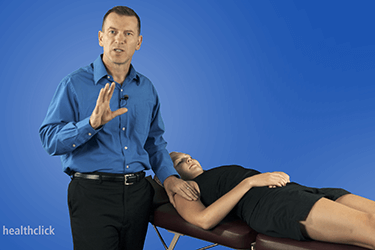
- Overview of what you should expect from this course
- Evidence in the form of literature-based research and clinical experience and judgement
- Critical thinking, how to determine if the literature is relevant
- Critical thinking -how to determine when to utilize specific tests
- Special tests: sensitive or specific tests
- Statistical tests to determine if a person has a specific condition
- Impairment and symptom classifications
Clear the Cervical Spine
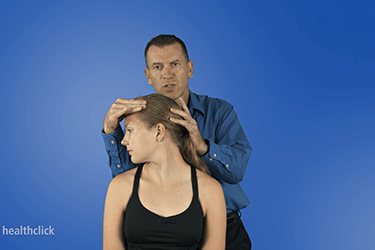
- Logical format to examination
- Clear the cervical spine as a source of shoulder symptoms
- Cervical facet and disc referral pain pattern
Thoracic Spine
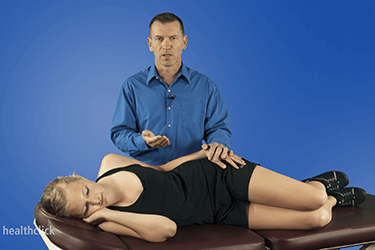
- Assess function of the thoracic spine
- Thoracic curvature and the effect on scapular position
- Scapular tipping
- Thoracic spine posture and mobility influence on scapular kinematics
Adhesive Capsulitis: Discussion

- Definition of adhesive capsulitis
- Adhesive capsulitis predictable stages
- Common findings
- How to categorize adhesive capsulitis
- Treatment suggestions
- Manual therapy
- Self management
Adhesive Capsulitis Examination and Treatment

- The systematic examination
- What is normal motion
- Pathology
- What are typical motion loss patterns
- Expected motion patterns from specific loss in different directions
- Mobilization techniques for glenohumeral joint
- Duration and intensity of mobilizations for optimal benefits
- Mobilization of the scapularis and the rotator interval
- Dynamic mobilization techniques
- Manual stretch techniques for inferior capsule
- Inferior humeral head glide
- How to determine the appropriate technique?
- Exercises to increase motion
- Summary of the examination and treatment options and estimated time frame for progression
AC Joint Pathologies
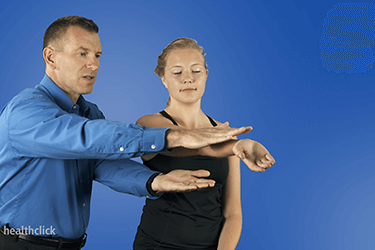
- Normal function
- Pathology
- Common injuries
- Common symptoms and complaints
- AC Joint sprains: pathology and clinical presentation
- AC joint DJD
- Distal clavicle osteolysis
- AC joint palpation
- Special tests to rule out AC joint pathology: sensitive or specific
- Accuracy of tests
- Manual therapy techniques-variety of techniques presented
- Taping techniques
- Exercises
Rotator Cuff Tears

- Classification of tears
- Common presentation of symptoms with specific tears
- Most common type of tear
- Testing the supraspinatus tendon
- Testing the infraspinatus and teres minor
- Testing the subscapularis
- Sensitivity and specificity
- Non operative care vs. operative
- Rehab considerations
- Conservative
- Moderately accelerated
- Accelerated
- Rotator cuff repair
- What if they have a shoulder immobilizer?
- Progression of exercises
Shoulder Instability
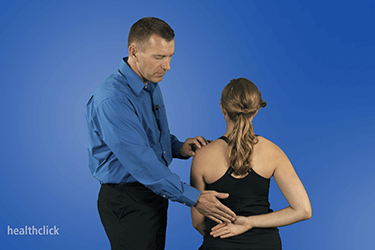
- Does instability = laxity?
- The role of the nervous system and laxity
- Goal of instability tests
- Type of tests and systematic sequence
- Apprehension test accuracy
- Relocation test accuracy
- Release test accuracy
- Jerk test accuracy
- Shoulder laxity/humeral head translation tests
- Instability tests
- Anterior laxity tests
- Test for the superior glenohumeral ligament
- Sulcus test -grading system
- Review of the tests and summary of how to develop a plan
Labral Tears

- How to diagnose
- Determine the location of the tear
- Common findings
- Types of tears and classification
- Clinical tests for tears-sensitivity and specificity
- Crank test
- Superior labrum tests-sensitivity, specificity and accuracy
- Active Compression (aka O?Brien’s Test)
- Anterior Slide
- Biceps Load I
- Biceps Load II
- Biceps Tension
- Additional tests also listed
- Exercises
- Improve stability and strength
- Improve scapular positioners
- Maximize neuromuscular control
- Improve proprioception
- oncavity compression retraining
Subacromial Pain
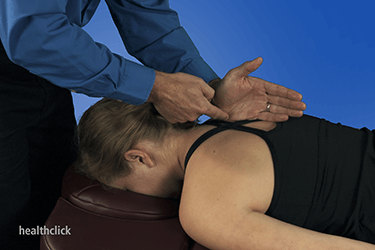
- Most common source of subacromial pain
- Shoulder impingement syndrome
- Intrinsic factors
- Extrinsic factors
- Thoracic mobility assessment techniques
- Assess thoracic rotation mobility relative to the shoulder
- Assess pectoralis minor
- Assess scapular function
- Static and dynamic tests
- Sensitivity, specificity
- Scapular muscle assistance test
- Classic impingement tests- How to perform, specificity and sensitivity
- Posterior shoulder tightness
- Sternoclavicular joint testing
- AC joint assessment
- Middle and lower trapezius testing
Manual Therapy

- Thoracic spine rotation mobilization
- Pectoralis minor stretch -specific
- Scapular mobilizations
- Thoracic extension mobilizations prone and sitting
- Glenohumeral joint mobilizations
- Demonstration
- Research to support treatment and expected outcomes
Exercises
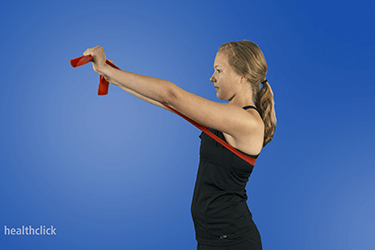
- Exercises to elicit high levels of activation in targeted muscles
- Middle trap
- Lower Trap
- Manual therapy combined with exercise for mid trap
- Infraspinatus and teres Minor
- Resisted exercises-benefits
- Empty can-research validity
- Serratus anterior
- Exercises for higher level clients
- Progression of exercises
Course Test - Evaluate your knowledge

- Use the Healthclick proprietary online education system which provides the online student with:
- Worldwide access to high definition video, anatomical animations and images, and written information
- The highest quality film in the industry, you can see the difference!
- Stop and resume within a course, the Healthclick system will optimize your course based on your device, connection and remembers where you left off.
- Real-time course updates. We are always adding to each courses, updating content, adding animations, these are not static courses!
- Evaluate your knowledge with the course test on any device.
- Print your state course certificate for CE credit.
- Take the online test as many times as need in order to achieve a 70 % or greater score.
Responsible CME® - Online CEU Course Testimonials
67.225.255.111Excellent course for experienced clinicians who would like to advance their knowledge base on treatment of the shoulder using manual therapy with evidence based practice -- Mitchell, OT
This course provided great oversight to shoulder pathology and provided great tests and rehab to address shoulder impairments . -- Andrew, OT
A very good and informative course. Good that they look at other things besides just the shoulder for shoulder pain. -- Shayna, ATC
I think this course was organized well, and it was helpful to my clinical practice. -- Natalie, PT
This course is very up to date on current evidence and educates on various ways to treat a condition in the shoulder based upon signs and symptoms. -- Lyndsi, PT
The course had great information from a senior physical therapist to novice. -- Heather, PT
Great course well organized -- Craig, Physical Therapist
This was a very useful course -- Adam, PT
Great graphics, awesome instructor! -- Thomas, PTA
Great review of common shoulder pathologies, manual therapy techniques, and therapeutic exercise with an emphasis on evidence based practice. -- Michelle, Physical Therapist
The course was well designed and easy to follow. The speaker was knowledgeable and well spoken. -- Cliff, PT